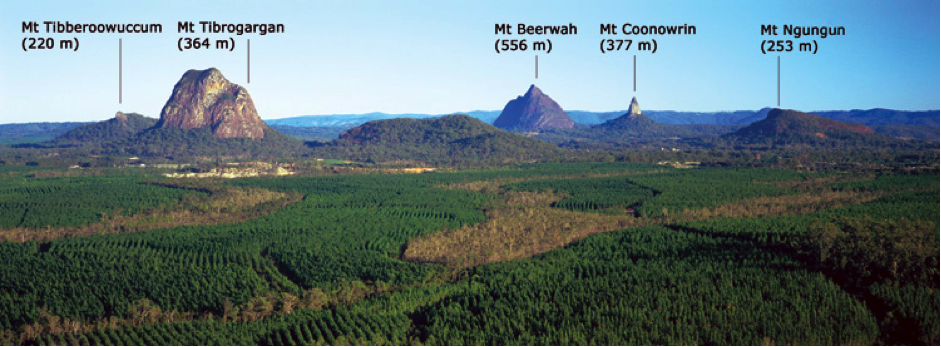Rock climbers find the cliffs at Kangaroo Point ideal for developing their skills. The rock is irregularly jointed with overhanging blocks and is called the Brisbane Tuff. In Brisbane’s early days rock was quarried from the cliffs and trimmed to make kerbstones. The Tuff is an excellent building stone as it resists wear, is slip resistant, retains its cream, pink and green colours, is stain resistant, can be split along sedimentary planes. It was used in the construction of St John’s Cathedral, St Stephens Cathedral, Bardon House, All Hallows Gateway and the Brisbane Hospital wall.
The rock is a welded ignimbrite with the composition of Trachyte which is dominantly quartz. A volcanic complex encompassing the Glasshouse Mountains exploded 26 Million Years ago, and white hot incandescent ash was blown 65 km south and settled in layers that welded together.
W. H. Bowser & Lever started quarrying the tuff at the Brisbane Hospital site c1885 and in 1920 opened the Windsor Quarry on the corner of Newmarket Road. They were not able to buy all the allotments in the block. Mrs France would not sell, and so Bowsers quarried around the house. In 1941 they also opened the Webster Road, Somerset Hills, quarry. The Windsor Quarry was taken over by the Department of Defence and three huge tanks were constructed to hold bunkering oil for the navy. A pipeline was tunnelled under the road and linked to the wharves at Newstead. The tanks remained in operation until the last heavy oil burning naval vessel was pensioned off.
EG Wilson 23/06/2015



Recent Comments